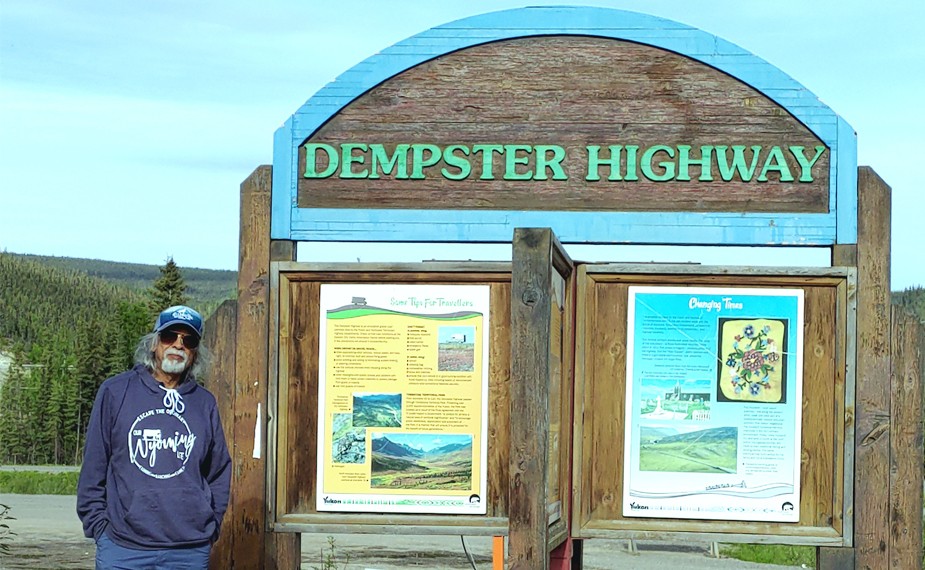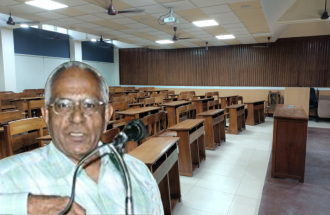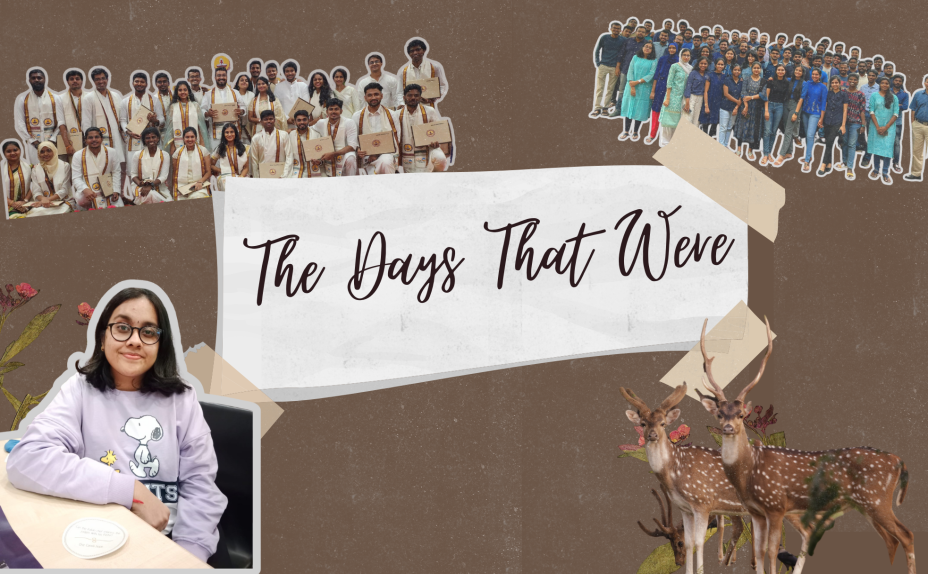
Galvez2Tuk & Beyond: Traversing the challenging Dempster Hwy.
In 2022, for the Summer Solstice, I decided to go solo, by road, from Galveston, TX, on the warm Gulf of Mexico, to the Land of the Midnight Sun, viz., Tuktoyaktuk, NT, Canada, on the freezing Arctic Ocean. My plan was to be in Tuk from 20-22 June, when there would be 24 hours of daylight.
The global apocalypse because of Covid-19, had brought life as we knew it, to a grinding halt. The cabin fever the lockdowns of 2020 and 2021 had induced, as we were cloistered in our homes, was becoming unbearable.
Therefore, when the world began opening up in 2022, and life gradually became relatively normal, what with the viral pandemic still officially raging, the urge to do something novel spurred the imagination. Given that isolation was still the name of the game, to avoid getting infected, one had to figure out ways to get around while avoiding crowded locales.
This was when the call of the desolate Tundra became irresistible. It was a no brainer. Even “Tony the Weasel” Fauci, would have approved…
My vehicle of choice for the arduous journey, was the 4WD Toyota Sequoia. Initially, I had planned to get a Toyota Highlander, but the roomier Sequoia finally edged out its smaller stablemate. The rugged Sequoia’s reliability even prevailed over rivals like the GM Suburban, and other offerings from Chrysler and Ford.
The 5000 miles/8000 kms. drive north was leisurely, planned that way to enjoy sights enroute. On most days, I started at 6 am to reach the night halt before 1 or 2 pm, in order to get a good campsite. This called for a strong cup of black coffee after waking up around 4 am, a heavy breakfast around 5:30 am, and a sumptuous dinner around 5 pm. During mid-morning rest stops, a large self-brewed cup of Darjeeling tea with snacks at 9-10 am, helped chase away any drowsiness. A relatively light lunch was usually consumed on the move.
Once settled down at the campsite, I usually brewed another cup of refreshing tea around 3 pm, before preparing dinner. After dinner, I generally walked around the campground, before going to sleep between 8-9 pm.
Day One - May 29: Drove 400+ miles to Abilene TX. The pkace jumped off the map because of the “Abilene Paradox.” It was a good choice, because the campground at the state park there, had the best tree canopy I have experienced.
Day 4 - June 1: After b/f, started off to the Devil’s Tower. Enroute, stopped at the “Our Wyoming Life” Ranch, whose episodes I had seen on YouTube. There, met “Ranch Hand” Jeff, purchased an OWL sweatshirt and some miscellaneous items from the farm store. Reached the KoA campground around 2 pm.
I first heard about Devil’s Tower when it was featured in the movie Close Encounters of the Third Kind. During a summer 1982 road trip, could not visit it, as there was a long drive from Mount Rushmore to Yellowstone’s Old Faithful village. However, while driving west on I-90, we spotted it on the distant northern horizon.
Therefore, on this 2022 northern sojourn, I was determined to visit this attraction, a decision I did not regret. The experience was so exceptional, I hope to return when the moon is full, to view this monolith by night.
June 2: Puttered around DT. Photographed the Tower every hour, from 5 am to 3 pm. Also, took advantage of the cool morning to visit the prairie dog colony and a pleasant evening to explore the beautiful campground. I decided not to hike around the monolith, as the day was a little too warm for such a strenuous trek.
June 3: Dew delayed departure from DT to 11 am, as I had to dry the tent and ground tarp. This was to ensure that mould did not get a chance to enter the vehicle.
Day 17 - June 14: As planned, I arrived at the start of Dempster Hwy. around 10 am. The Dempster branches off from the Klondike Hwy., about 40 kms. south of Dawson City, YT. Because the next service station with fuel is only available at Eagle Plains, some 400 kms. away, I not only had to top up the Sequoia’s tank, but also take an additional 4 gallons/16 litres of petrol in jerry cans, for unforeseen emergencies.
The Dempster Hwy., affectionately (or irreverently) called the DUMPSTER, is an unpaved gravel road that poses a challenge to both vehicles and drivers. Many vehicles have broken down while traversing it. Lesser mortals have turned back after driving only a portion, as it was too intimidating.
This is probably what made it so alluring!
I began driving the Dempster on a beautiful sunny morning, and reached the Tombstone Territorial Park campground some 70 kms (approx. 45 miles) away, between noon and 1 pm, without any incident. Being extra cautious, I limited my speed on the gravel road to 25-30 mph, even though the posted limit was 80 kms or 50 mph.
On arriving at the Tombstone Campground I settled down in the campsite of my choice. The campground did not have electricity, but the sun shining brightly in a cloudless sky, enabled me to use the solar panels to charge the solar power station. During the day, temperatures were a balmy 15 Celsius/60 Fahrenheit. At night, it dropped to around 5C/40F, forcing me to plug the electric blanket into my solar power station.
This campground is arguably one of the best in the Yukon. However, the park’s crown jewel is its Interpretive Centre, 300 meters from my campsite. For one and half days, it was practically my second home, as I availed of the free Wi-Fi and airconditioned sitting area sofas, while sipping piping hot Labrador tea. The Rangers also allowed me to fill my drinking/cooking water containers, from their kitchen tap.
On the second day afternoon, a Wednesday, around 3 pm, a ranger served guests herbal tea and Bannock – an indigenous, sweet, lightly deep-fried cake that reminded me of adhirsam, the South Indian delicacy.
On June 16, I left the Tombstone Campground around 6 am, for Eagle Plains. The stark beauty of the landscape on both sides of the road was breath taking. The Ogilvie Ridge viewpoint was a great spot for a bio break and morning tea. After topping up fuel at Eagle Plains, I reached the Arctic Circle sign around noon, to take the obligatory photos. By 1 pm, I arrived at the Rock River Campground, and used the solar panels to charge the solar power station.
I had originally planned to spend two nights at the Rock River Campground. However, the torrent caused by the spring melt, was making ferry crossings unpredictable. Therefore, when a fellow camper informed me that the ferry would be definitely operating the next day, after being closed for most of the previous week, I decided to advance my travel plans by a day.
Unfortunately, I was also erroneously told that the ferry would be running 24 hours an day, to clear the backlog.
Therefore, around 1:30 am on June 17, I left the Rock River campground, having gone to sleep around 7 pm the previous evening. It may seem rather early, but the sun that had set around 12 am was already preparing to rise by 2 am.
I crossed the border from Yukon into the Northwest Territories, and reached the Peel River Ferry at 4:30 am, only to see that the ferry had ceased operating around midnight and would resume only at 9:30 am, its normal scheduled start.
I crossed the border from Yukon into the Northwest Territories, and reached the Peel River Ferry at 4:30 am, only to see that the ferry had ceased operating around midnight and would resume only at 9:30 am, its normal scheduled start.
The bright side – I was able to snatch two shuteyes lasting a couple of hours each. The downside – no toilet facilities. For Wi-Fi, one had to go to the water’s edge, where large blood-thirsty mosquitoes swarmed.
After crossing the Peel River, I headed for the Mackenzie River Ferry crossing, some 60 kms. away. I was hoping to visit Inuit hamlet of Tsiigehtchic. Unfortunately, the village was closed to outsiders, and I drive straight to Inuvik, NT.
On June 19 afternoon, I met my sisters at Inuvik airport and we stayed in a motel, experiencing for the first time, sunlight 24 hours a day.
Day 23 - June 20: Around 10 am, we started the drive from Inuvik to Tuktoyaktuk, NT. This 150 kms/95 miles stretch of the Dempster Hwy. was only completed in 2017. The Tundra was again breath taking spartan. Without trees, we had 360 degrees of unobstructed views upto the horizon. There were large swathes of snow and ice packs, feeding innumerable water bodies, populated by various species of migratory birds.
Whenever we stepped out to take photos, the stiff breeze reminded us that it was still early spring here, even if the lower 48 states were basking in the summer heat. Also, since the migrating birds had probably just arrived, it was too early to spot any of this year’s hatchlings.
As we got closer to Tuktoyaktuk, we spotted the first Pingos. These are mounds of ice that push their way through faults in the permafrost. Some were impressive, the height of large hillocks. In the middle of Tuk, we were able to ascend a large pingo for a panoramic view of the hamlet.
We reached our BnB around 3 pm. After freshening up, we drove a short distance through Tuk, to the Arctic Ocean sign that marked the northern most point of our journey.
To say the air was brisk, would be an understatement. The cold winds blowing from the ice-covered ocean were bone chilling. After hurriedly taking a few photos, we scurried back into our vehicle and retreated to the comforts of the roomy BnB.
The next day, 21st June, the Summer Solstice was a sunny, warm one. Around 2 am, I took advantage of the brightness to stroll the streets around the BnB. Practically every house had a dog – mostly Huskies. While most were friendly and wagged their tales as I walked by, a few growled menacingly and some barked furiously.
Sometime around 12 pm, I went over to Grandma’s Kitchen to sample their Beluga whale delicacy. It was very pricy. None of the other dishes on the menu were of interest to me – the usual greasy stuff available everywhere.
Around 3 pm, we went back to the Arctic Ocean sign, to enjoy a beautiful blue expanse of water glistening in the bright sunlight. Almost all the ice had melted, and with little wind, the weather was wonderful - a balmy 10C/50F. A sweater was enough to keep us warm.
We took advantage of this great weather, walking along the water’s edge to a spot a few hundred meters away, where the local fishermen were launching boats to go out or winching them back onto trailers after returning.
The day of the Summer Solstice was also being celebrated as Indigenous Peoples’ Day. There was a stage on which various groups were performing. Also, the local community hall had stalls featuring various local foods.
Tempting though the latter was, we decided that discretion was the better part of valour. With the Covid-19 pandemic still raging, why tempt fate by plunging into milling crowds, especially when we were more than 5000 miles from home!
We therefore opted to go back to the spacious BnB, and prepare dinner in the well equipped kitchen there. With so much travelling ahead of us, the last thing we wanted was to be infected by this extremely contagious virus.
On 22nd June, we went back to the Arctic Ocean sign, to witness a third face of the Arctic Ocean. The water surface was now slate grey, churned up by a stiff breeze. Even though it was not as cold as the first day, it was not as warm and pleasant as the previous one, either.
What we enjoyed most in the three days we spent at Tuk, was the 24 hours of continuous sunlight. Crazy as it may seem, we went for walks around 12 am, 3 am and 5 am. The usual terminology of dawn, dusk, midnight, morning, noon, afternoon, evening and night, just didn’t make any sense in the Land of the Midnight Sun.
BIO :
L Prasad
Professor (Retired)
Organizational Behaviour & Human Resources Management
PhD, Northwestern University, Evanston, Illinois, USA;
DIISc, Indian Institute of Science, Bangalore, India;
BTech, IIT Madras, India
Professor Prasad combines solid academic credentials with the ability to take sessions for executives at all levels. His style integrates theory with practice to facilitate double-loop learning, i.e., helping junior and middle management participants understand the underlying dynamics of various organizational phenomena. For senior and top management participants, he emphasizes triple-loop learning, by getting them to rethink the organization’s Theory of Business and focusing on Symbolic Leadership.
Professor Prasad has more than 40 years’ experience in the USA and India. His professional activities encompassing teaching, research, consulting and training, centre on the theme: Achieving a Competitive Edge through People. His passion is High Impact Leadership.
While Professor Prasad can handle a number of topics in the Applied Behavioral Sciences, his favorites include: Organizational Behavior: Managing Individuals and Groups at Work; Organizational Politics: Implications of Playing the Game; Making a Difference: Changing Mindsets from “Hired-hand” to a One of “Ownership”; Thinking Unconventionally: Lessons from “12 Angry Men”; Negotiation and Conflict Management; Organization Theory: Structure and Process by Design; The Organizational Culture of World Class Companies; Managing Paradoxes in the Ambidextrous Organization; Working in Martix Structures
Professor Prasad’s recent publications include:
•Co-authored with Niharika Garud. “Managerial cognition in R&D processes within Indian hi-tech firms,“ Journal of Entrepreneurship and Innovation Management, Vol. 2, No. 3, Dec 2013, pp. 79-98.
•Co-authored with Gloryson Chalil. “Burnout Dimensions, Work Environment and Job Attitudes: A Study on Turnover Intentions among Indian Software Professionals,” Indian Journal of Industrial Relations, Vol. 50, No. 1, July 2014, pp. 151-164.
•Co-authored with Catherine Kwantes. “Test and Extension of Multiple Foci/Multiple Components of Workplace Commitment in a Hospital in India,” Vision – The Journal of Business Perspective, Vol. 18, No. 3, Sept 2014, pp. 165-174.
Classics:
•"The Etiology of Organizational Politics: Implications for the Intrapreneur," SAM Advanced Management Journal, Summer 1993, Vol. 58, No. 3, pp. 35-41.
•"Conceptualizing Organizational Politics as a Multi-dimensional Phenomenon" (with A. H. Rubenstein), IEEE Transactions on Engineering Management, January 1992, Vol. 39, No. 1, pp. 4-12.
•"The Objectives of In-house R&D in India," Journal of Scientific and Industrial Research, September 1978, Vol. 37, No. 9, pp. 439-444.
BIO :
L Prasad
Professor (Retired)
Organizational Behaviour & Human Resources Management
PhD, Northwestern University, Evanston, Illinois, USA;
DIISc, Indian Institute of Science, Bangalore, India;
BTech, IIT Madras, India
Professor Prasad combines solid academic credentials with the ability to take sessions for executives at all levels. His style integrates theory with practice to facilitate double-loop learning, i.e., helping junior and middle management participants understand the underlying dynamics of various organizational phenomena. For senior and top management participants, he emphasizes triple-loop learning, by getting them to rethink the organization’s Theory of Business and focusing on Symbolic Leadership.
Professor Prasad has more than 40 years’ experience in the USA and India. His professional activities encompassing teaching, research, consulting and training, centre on the theme: Achieving a Competitive Edge through People. His passion is High Impact Leadership.
While Professor Prasad can handle a number of topics in the Applied Behavioral Sciences, his favorites include: Organizational Behavior: Managing Individuals and Groups at Work; Organizational Politics: Implications of Playing the Game; Making a Difference: Changing Mindsets from “Hired-hand” to a One of “Ownership”; Thinking Unconventionally: Lessons from “12 Angry Men”; Negotiation and Conflict Management; Organization Theory: Structure and Process by Design; The Organizational Culture of World Class Companies; Managing Paradoxes in the Ambidextrous Organization; Working in Martix Structures
Professor Prasad’s recent publications include:
•Co-authored with Niharika Garud. “Managerial cognition in R&D processes within Indian hi-tech firms,“ Journal of Entrepreneurship and Innovation Management, Vol. 2, No. 3, Dec 2013, pp. 79-98.
•Co-authored with Gloryson Chalil. “Burnout Dimensions, Work Environment and Job Attitudes: A Study on Turnover Intentions among Indian Software Professionals,” Indian Journal of Industrial Relations, Vol. 50, No. 1, July 2014, pp. 151-164.
•Co-authored with Catherine Kwantes. “Test and Extension of Multiple Foci/Multiple Components of Workplace Commitment in a Hospital in India,” Vision – The Journal of Business Perspective, Vol. 18, No. 3, Sept 2014, pp. 165-174.
Classics:
•"The Etiology of Organizational Politics: Implications for the Intrapreneur," SAM Advanced Management Journal, Summer 1993, Vol. 58, No. 3, pp. 35-41.
•"Conceptualizing Organizational Politics as a Multi-dimensional Phenomenon" (with A. H. Rubenstein), IEEE Transactions on Engineering Management, January 1992, Vol. 39, No. 1, pp. 4-12.
•"The Objectives of In-house R&D in India," Journal of Scientific and Industrial Research, September 1978, Vol. 37, No. 9, pp. 439-444.






